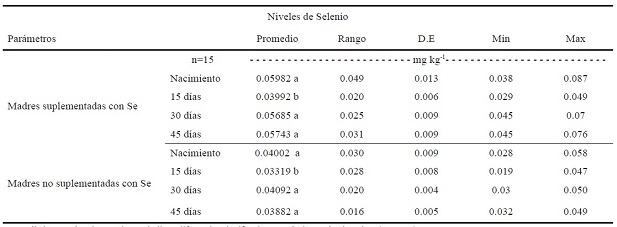Selenium levels in soil, grass and sheep: Inf luence of Se supplementation on the IgG concentration in pregnant ewes and lambs
DOI:
https://doi.org/10.28940/terra.v40i0.950Keywords:
GSH-Px, IgG, selenium levels, sheep, soil and grassAbstract
The effect generated by the def iciency of Selenium (Se) in the soil and in the forages on the yields of sheep production justif ies the analysis of the levels of this microelement in the soil, pasture and sheep in dif ferent regions of the State of Mexico from of the evaluation of the enzymatic activity of GHS-Px and the inf luence of Se supplementation on IgG concentration in pregnant ewes and lambs. The results show that Mexiquense soils and forages present Se def iciencies at levels of ±0.02 and 0.03±0.12 mg kg-1, respectively. The levels of Se and the average GSH-Px activity in the blood of sheep subjected only to grazing were equally def icient with values of 0.02 ± 0.04 mg kg-1 and 51.54 ± 24.55 U g-1 Hb. Statistically signif icant GSH-Px values were observed between groups from different regions and sheep breeds, being higher in creole sheep compared to Suf folk (P < 0.05). There were no statistically signif icant dif ferences in Se values in soil and grass, according to soil type, pH, organic matter content or stages of higher rainfall. The sodium selenite supplement at a rate of 5 mg mL-1 x 100 kilograms of weight in pregnant sheep allowed to identify signif icant statistical dif ferences (P < 0.01) in the Se levels of the treated animals in relation to the negative control, but enough for the supplemented animals to consistently reach the recommended levels of this element. IgG levels increased in animals supplemented with Se but no statistical dif ferences were observed between groups. From the foregoing, it follows that it is an important nutrient in sheep farming, so adequate doses should be administered to the herds to improve productivity in the Mexican production units.
Downloads
Publication Facts
Reviewer profiles N/A
Author statements
- Academic society
- Terra Latinoamericana
- Publisher
- Mexican Society of Soil Science, C.A.

















